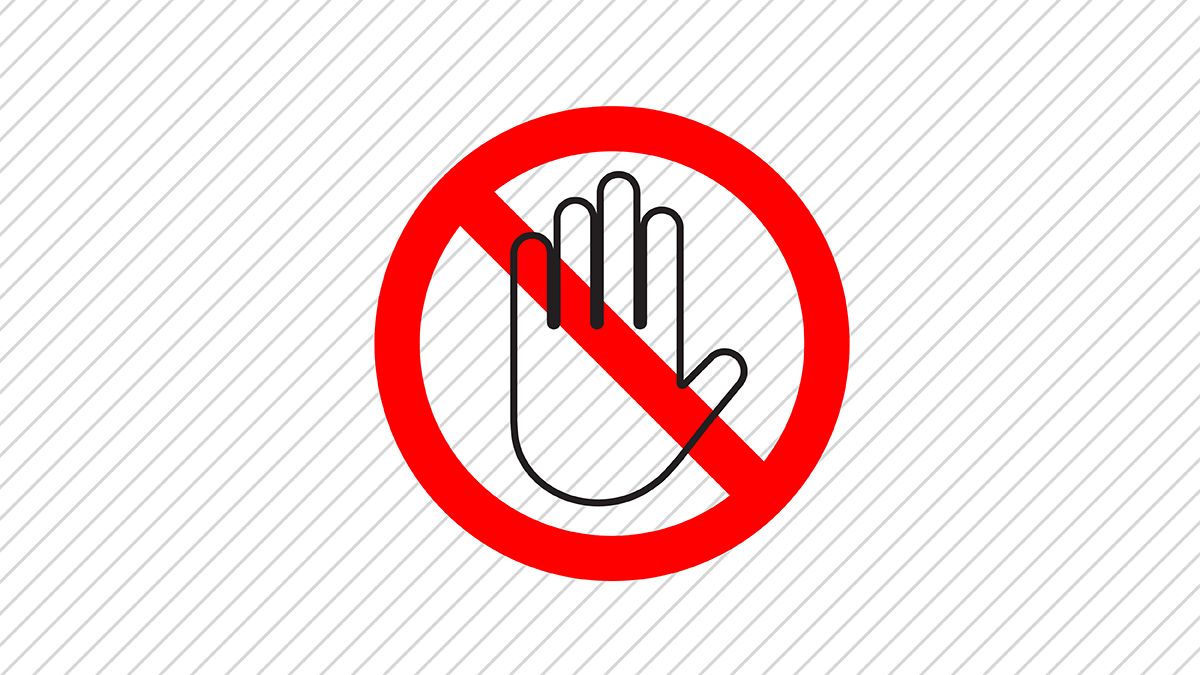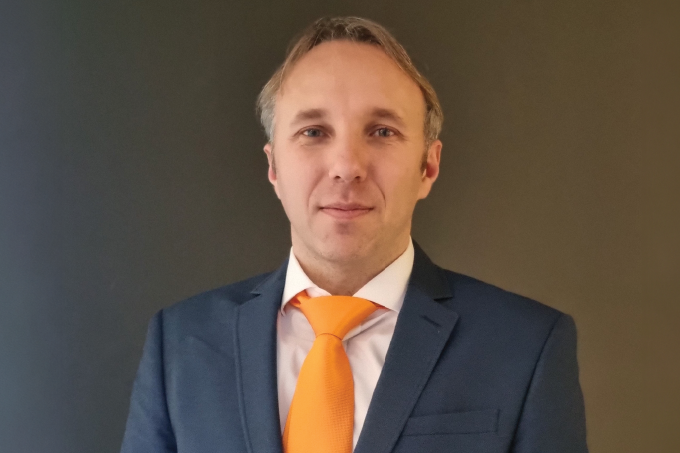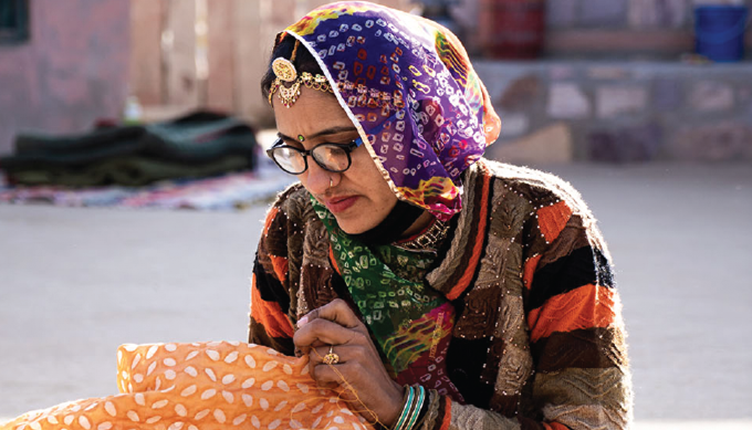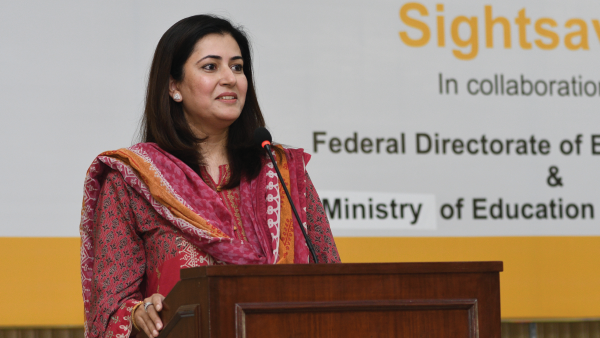You are viewing 1 of your 3 articles before login/registration is required
Stopping The Unstoppable
SYFOVRE: the new FDA approved treatment for geographic atrophy
The slow progression of geographic atrophy (GA) has made the identification of viable treatment options challenging. But now, in a landmark moment for retinal ophthalmology, the FDA have approved SYFOVRE (pegcetacoplan injection) for the treatment of GA (2). By specifically targeting complement C3, SYFOVRE provides control of the complement cascade, a critical component of the body’s immune system.
The approval comes off the back of positive results from the DERBY and OAKS studies – multicenter, randomized, double-masked, sham-controlled phase III studies that compared the efficacy and safety of SYFOVRE with sham injections across a varied population of patients with GA. After a 24 month period, SYFOVRE was found to reduce the rate of GA lesion growth compared with sham.
Here, we speak with Caroline Baumal, Chief Medical Officer at Apellis, and CEO and cofounder Cedric Francois, who explain what this new treatment means for the retina space – and for patients.
Geographic atrophy is commonly seen as an inevitable and unstoppable side effect of aging. What inspired you to take on this challenging disease?
Francois: Well, there is an incredible unmet medical need; more than a million patients in the US alone are affected by this disease. It is typically something that patients start seeing or acquiring around the age of 70 and above. These are the last decades of life where you have the chance to watch your grandchildren or great grandchildren grow up. Going blind can have a dramatic and terrible impact on our lives, so giving even a couple of extra years of vision to people is incredibly inspiring.
Why is this new treatment so exciting?
Baumal: Cedric’s has already noted the impact that GA has on independence and the quality of life for our elderly patients. But then consider that, prior to the approval of SYFOVRE, there were no treatments for GA.
Following the FDA approval? SYFOVRE is now available for all patients with GA, regardless of lesion location or whether one or both eyes are affected – and that’s reflective of the broad and representative population enrolled in our clinical trials. I’m really pleased with the dosing flexibility of every 25-60 days, which allows us to treat patients mirroring the clinical study regimens. The approval of SYFOVRE is a genuine scientific breakthrough and provides an advance for patients who have been waiting a long time for a treatment.
Looking at the bigger picture, the approval of SYFOVRE is the first definitive proof that the natural progression of GA can be modified, essentially turning GA into a treatable disease. We can intervene at the level of C3 and C3b in the complement cascade to slow down the disease progression.
Francois: I honestly think this is a momentous event. It’s the first time after many failures that we have a drug that can slow down the progression of GA lesions. We’re going to look at further increasing efficacy over time; the aim is always to slow down progression of the disease as much as possible. We will also focus on convenience – in fact, we are already working on a pre-filled syringe that will make it easier for physicians to administer the product. But we will also try to find ways to reduce the frequency of the injections. Right now, we have very good efficacy with injections every two months – but perhaps we can go even lower.
Ultimately, there are two really important features that people need to know about. First, it has increasing effects over time, which is exceedingly rare. If you ask a physician to think about a drug that has an increasing effect over time, most won’t come up with a single example. Second, the dosing flexibility Caroline mentioned – from 25–60 days between injections. Just think about the practicality of that; when a patient needs to book an appointment, you have a whole month to play with!
Could you talk about your experience of industry and clinical research collaboration in the retina space?
Francois: In our field, the industry–clinician relationship is, I think, quite remarkable – perhaps even unique in the world of medicine, where drug developers can be viewed with a great deal of skepticism – sometimes even antagonism. The importance of the common goal – finding therapies for blindness – keeps us all focused and motivated.
Moreover, developers in this space have not abused their privilege, keeping prices within a reasonable framework.
What were the main challenges during development and through approval?
Francois: Where do I even start?! Whenever a therapeutic goes through development, there are numerous challenges that must be overcome – and you need a series of small miracles to make it happen. But two particular challenges stand out. When we started the phase III clinical trial, we had a small manufacturing issue that caused a big headache – and we had limited time to fix things. We discovered the problem in September 2018 but still managed to restart clinical trials in March 2019. Another key challenge was when the DERBY trial missed the primary endpoint in phase III. At the time, statisticians offered interesting feedback about an important imbalance; in short, we had aggressive patients in the active arm compared with the sham control. At the time, it was very clear that if we treated these patients longer, the imbalance would correct itself – but, two months into the trial, the patients in the drug arm were 20 percent worse than the control.
It was a challenge but also a lesson. We learned that the drug needed more time to overcome the deficit to show its maximum potential. Amazingly, at 24 months into DERBY and OAKS the difference between the groups had gone.
What lies beyond FDA approval?
Baumal: The US FDA approval is just the beginning of what’s possible for SYFOVRE. We continue to evaluate the long-term safety and efficacy of SYFOVRE in the GALE extension study, which is a three-year trial. Combined with the phase III DERBY and OAKS studies, GALE will allow us to better understand the efficacy and safety profile of SYFOVRE with up to five years of treatment. We are excited about this data and look forward to continuing to share information about this first-of-its-kind treatment with the medical community.
We are committed to bringing SYFOVRE to patients around the world as quickly as possible. In addition to our recent approval in the US, we are preparing for other approvals and launches; we have a marketing application that is currently under review in the European Union.
I am excited to be part of the team to bring SYFOVRE to patients as the first and only treatment for GA. As a retina specialist, I look forward to finally having a treatment to offer patients!
This article was originally published in The Ophthalmologist.
References
- D S Boyer, “The Pathophysiology of Geographic Atrophy Secondary to Age-Related Macular Degeneration and the Complement Pathway as a Therapeutic Target,” Retina, 37, 819 (2017). PMID: 27902638.
- Apellis. “FDA Approves SYFOVRE™ (pegcetacoplan injection) as the First and Only Treatment for Geographic Atrophy (GA), a Leading Cause of Blindness” (2023). Available at: bit.ly/3yfciLH.
The New Optometrist Newsletter
Permission Statement
By opting-in, you agree to receive email communications from The New Optometrist. You will stay up-to-date with optometry content, news, events and sponsors information.
You can view our privacy policy here
Most Popular
Sign up to The New Optometrist Updates
Permission Statement
By opting-in, you agree to receive email communications from The New Optometrist. You will stay up-to-date with optometry content, news, events and sponsors information.
You can view our privacy policy here
Sign up to The New Optometrist Updates
Permission Statement
By opting-in, you agree to receive email communications from The New Optometrist. You will stay up-to-date with optometry content, news, events and sponsors information.
You can view our privacy policy here







